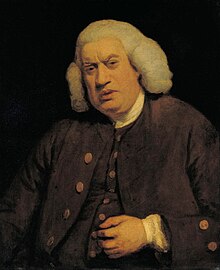A fellow researcher at the Freemason's Lodge sent me this reference last week, dating from the 1720s. (Thanks, Andrew.)
"We had a good dinner, and, to their eternal honour, the brotherhood laid about them very valiantly. They saw then their high dignity; they saw what they were, acted accordingly, and shewed themselves (what they were) men. The Westphalia hams and chickens, with good plum pudding, not forgetting the delicious salmon, were plentifully sacrificed, with copious libations 90 of wine for the consolation of the brotherhood. But whether, after a very disedifying manner their demolishing huge walls of venison pasty, be building up a spiritual house, I leave to brother Eugenius Philalethes to determine. However, to do them justice, I must own, there was no mention made of politics or religion, so well do they seem to follow the advice of that author. And when the music began to play, “Let the king enjoy his own again,” they were immediately reprimanded by a person of great gravity and science."
Handbooks dealing with the secrets of the Brethren like to point out the society's emphasis on temperance, moderation and fraternity. But judging from this excerpt, this doesn't exactly seem to be the case. Demolishing walls of venison pasty?? Damn. I want in.
But lest this makes you believe that Masonic feasts were all about indulgence, I found this very angry letter that seems to paint a somewhat different picture. Addressed the Grand-Master of the society, it was written in May of 1791, shortly after the annual feast.
Dear Sir,
I have receiv’d your very polite letter and in return, am to inform you that when I followed my senior to the table every chair was taken, except ONE and that of Right belonged to brother Lewis. Not any person would make room for me, and I was reduced to the disagreeable situation at the end of the Table, where the Dishes were to be handed over my back, for 200 people, and a door continually opening at any head by which I got a violent cold and have been very ill.
Such treatment, I may say such rudeness to a Man near 70 years of age who hath been 25 years a loyal Officer and a laborious Servant to the Society, and who never was accustomed to scrambles for a Chair, was too mortifying and too degrading. It did not become me to trouble the Grand Master with a complaint at that time or to enter into altercation with any person. If you saw me in that uncomfortable place, you had authority by your office to have placed one in any proper Seat.
I was necessitated to leave the hall before the second course was brought on, being unable any longer to bear the crowd of servants at my back. this has determin’d me to withdraw from a society, where I was treated with such disrespect....
Guess there's always a crotchety kill-joy in the pack. But it made me wonder what exactly was going on at these dinners, and how the experience of dining might change over time. By 1813, the "festive board" –– ie. the party –– and the Masonic ritual had been separated entirely. Are these dinners gradually becoming more civilized? And if so, why?























.jpg)
